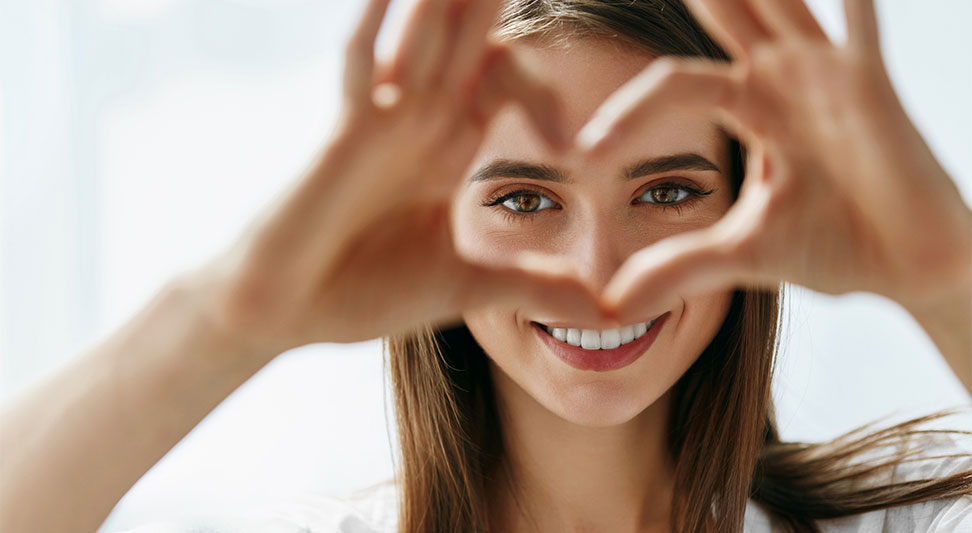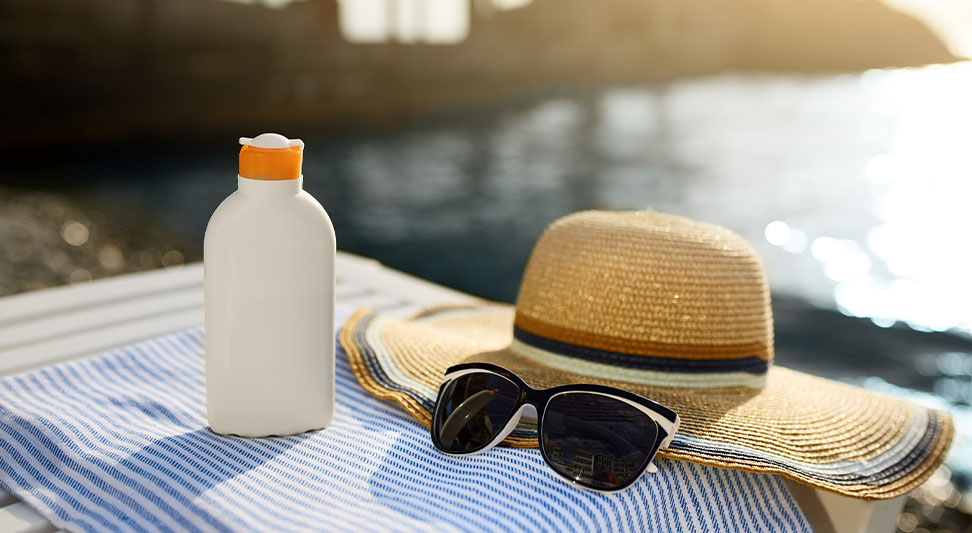It’s May! The weather is heating up, schools are winding down, and all over Oklahoma families are preparing for vacations, summer camps, and little league sports. But May is also an important month for vision health and awareness because it has been named Healthy Vision Month by the National Eye Institute and Ultraviolet (UV) Awareness Month by Prevent Blindness.
Healthy Vision Month
Each May, the National Eye Institute (NEI) and partner agencies develop special initiatives for Healthy Vision Month to promote different ways of taking care of your baby blues.
Equal Access to Eye Care
This year, NEI wants to inspire families to team up and learn how to protect their vision together. This year’s campaign focus is on people who are more likely to have eye problems because of barriers that inhibit access to eye care.
To help, they’ve put together some really helpful resources and learning opportunities for families.
- Resources to Help Pay for Eye Care
- Live Social Media Events Throughout the Month
- Healthy Moments Podcast: Protecting Your Vision
If your eyes feel healthy, it’s easy to assume they are healthy. But, NEI reminds us that many eye diseases don’t have any warning signs, so you could have an eye problem and not know it. The good news is that there’s a lot you can do to set yourself up for a lifetime of healthy vision!
NEI outlines eight practical steps to take to protect your vision. None of these steps require big lifestyle changes, but, together, they can add up to a healthier future for your eyes.
8 Things You Can Do to Protect Your Vision

1. Find an eye doctor you trust
Many eye diseases don’t have any early symptoms, so you could have a problem and not know it. The good news is that an eye doctor can help you stay on top of your eye health!
Find an eye doctor you can trust by visiting one of our affiliated locations in your area. You can also ask friends and family if they like their optometrist, or check with your health insurance plan to find eye doctors near you.
2. Ask how often you need a dilated eye exam
Getting a dilated eye exam is the single best thing you can do for your eye health. It’s the only way to find eye diseases early — when they’re easier to treat and before they cause vision loss.
Your eye doctor will decide how often you need an exam based on your risk for eye diseases. Ask your eye doctor what’s right for you.
3. Add more movement to your day
Physical activity can lower your risk for health conditions that can affect your vision, like diabetes and high blood pressure. On top of that, daily movement and exercise can help you feel your best.
If you have trouble finding time for physical activity (totally normal btw!), try building it into other activities. Walk around while you’re on the phone, do push-ups, air squats, or stretches while you watch TV, or dance while you’re doing chores. Anything that gets your heart pumping counts as exercise!
4. Get familiarized with familiar eyes
Some eye diseases—like glaucoma and age-related macular degeneration—can run in families. While it may not be the most exciting topic of conversation, talking about your family health history can help everyone stay healthy.
The next time you’re chatting with relatives, ask if anyone knows about eye problems in your family. Be sure to share what you learn with your eye doctor to see if you need to take steps to lower your risk.
5. Eat right for your sight
Eating healthy foods helps prevent health conditions—like diabetes and high blood pressure—that can put you at risk for eye problems.
Step up your healthy-eating game by adding more eye-healthy foods to your plate! Try dark, leafy greens like spinach, kale, and collard greens. And pick up some fish high in omega-3 fatty acids like halibut, salmon, and tuna.
6. Make a habit of wearing your sunglasses (more on that in a minute!)
You know the sun’s UV rays can harm your skin, but did you know the same goes for your eyes?
Wearing sunglasses that block 99-100% of both UVA and UVB rays can protect your eyes and lower your risk for cataracts. So be sure to add sunglasses to your must-have list before you leave the house.
Sunglasses ✅
Healthy eyes ✅
7. Stay on top of long-term health conditions
Diabetes and high blood pressure can increase your risk for some eye diseases, like glaucoma.
If you have diabetes or high blood pressure, ask your doctor about steps you can take to manage your condition and lower your risk of vision loss.
8. If you smoke, make a quit plan
Quitting smoking is good for almost every part of your body, including your eyes! Kicking the habit will help lower your risk for eye diseases like macular degeneration and cataracts.
Need help quitting? The Oklahoma Tobacco Helpline has FREE resources and coaches.
UV Awareness Month

In addition to Healthy Vision Month, our pals at Prevent Blindness have also declared the month of May as Ultraviolet (UV) Awareness Month.
Makes sense, right? As you begin making your summer plans, you need to remember that summer months mean summer sun. And while finding a good pair of sunglasses and putting on some sunscreen is a good place to start, spending a lot of time out in the sun carries more risk than you might realize.
What’s UV anyway?
And why is it so important to protect yourself from it?
The sun releases energy (radiation) in many forms. The sunlight we see is one form. The heat we feel from the sun is another. Ultraviolet (UV) rays are the third type of radiation and are invisible to the eye.
UV rays come in three different forms:
- UV-A – Making up 95% of UV rays, this type has the longest wavelength and penetrates the deepest, passing through the cornea and into the retina. They can cause aging, wrinkling, cataracts, macular degeneration, and cancer.
- UV-B – These rays affect the surface of your skin and eyes, causing tanning, sunburn, photokeratitis, temporary vision loss, cataracts, and cancer.
- UV-C – Our atmosphere absorbs UVC rays, so there’s no need to worry about them unless you’re in outer space.
The good news is that it’s pretty easy to protect yourself from overexposure to harmful UV rays. Just follow these five simple steps:
- Wear a big, floppy-brimmed hat that shades your eyes, ears, face, and shoulders as much as possible.
- Slather on a broad-spectrum sunscreen 15 minutes before sun exposure and reapply every two hours, or after swimming, sweating, or towel-drying.
- Cover up and stay in the shade from 10am to 4pm when UV rays are the strongest.
- Wear sunglasses
And when you’re trying on some sweet new shades, it’s important for children, adults, and senior citizens to find sunglasses that meet the following criteria:
- Filter out 99-100% of UVA & UVB rays
- Reduce glare
- Do not distort colors
- Comfortable to wear
For more information on UV eye protection, check out this helpful webpage from Prevent Blindness.
And if you love the idea of getting a fancy new pair of UV-blocking sunglasses but your regular glasses make that notion next to impossible, maybe it’s time to look into LASIK!
Schedule a free Oklahoma City LASIK consultation at nJoy Vision

